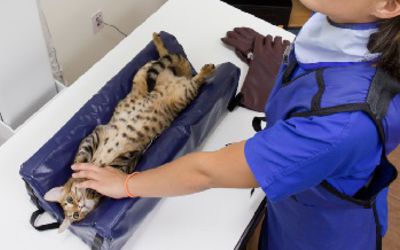
Veterinary radiography has evolved tremendously over the years. Modern equipment, coupled with state-of-the-art techniques, ensures that our furry pals receive the best care possible. One pivotal progression in this domain is the use of vet x-ray positioning aids. This guide probes deep into the universe of x-ray positioning aids, giving you a thorough look.
Understanding Vet X-ray Positioning Aids
Before delving into the details, let's first comprehend the underlying concept. In simple terms, x-ray positioning aids assist veterinary specialists secure the most precise images while making sure minimal discomfort for the animal. They play a essential role in holding pets in the correct position, minimizing movement, and making certain uniform, high-quality results.
Why are X-ray Positioning Aids Vital in Veterinary Practice?
Safety for Both Animal and Technician: Lessening animal movement is essential during x-ray procedures. This not only makes sure clear images but also minimises the risk of radiation exposure for both the animal and the technician.
Consistent Image Quality: Uniformity is key when it comes to x-rays. Vet x-ray positioning aids assist in achieving that by making sure animals are held in the right posture for clear images.
Reduction in Retakes: If a pet stirs during the x-ray process, the chances are high that the images might surface unclear. Positioning aids markedly reduce such situations, leading to fewer retakes.
Popular Types of Vet X-ray Positioning Aids
Foam Positioners: These lightweight and sturdy positioners are excellent for upholding the animal's body parts during radiography. They appear in various shapes and sizes designed to fit different animals and body parts.
Sandbags: They're outstanding for stabilizing and positioning. Their weight supports stop movement during the x-ray operation.
Tape and Straps: These can be utilised to bind limbs in place. They're gentle on the skin and can be altered based on the pet's comfort.
Immobilisation Devices: For pets that are especially nervous, immobilisation devices can provide a safe way to hold them still during the x-ray process without inflicting any discomfort.
Selecting the Right X-ray Positioning Aids for Your Veterinary Clinic
With the array of aids available, choosing the suitable one might seem daunting. However, ponder on the following factors:
Type of Animals Treated: A clinic predominantly working with small pets might have different demands than one dealing with larger animals.
Frequency of Use: Sturdy positioning aids are a requirement for busy clinics.
Budget: While it's vital not to sacrifice on quality, vet clinics also need to guarantee they're making cost-effective decisions.
Tips for Using Vet X-ray Positioning Aids Effectively
Training is Crucial: Guarantee that all your staff are adequately trained in using the aids. This will guarantee the safety and comfort of the animals while getting the best possible x-ray images.
Regular Maintenance: Like all equipment, vet x-ray positioning aids also degrade with time. Consistently check for wear and tear and swap them when necessary.
Prioritise Comfort: While getting the ideal image is crucial, it's just as important to ensure the animal's comfort. Always make sure that any restraints or positioners used are not leading to any distress to the animal.
Vet x-ray positioning aids have transformed the field of veterinary radiography. They have not only guaranteed the creation of clear, high-quality images but have also had a major role in enhancing the safety and comfort of the pets undergoing the process. As veterinary professionals, it's our duty to guarantee we're outfitted with the best tools and knowledge to render our furry clients the best care possible.
If you're seeking to improve your veterinary clinic with the most recent x-ray positioning aids or desire more information about them, visit xray4vets. Jump into a realm of advanced veterinary instruments and boost the care you give to your treasured animal patients.